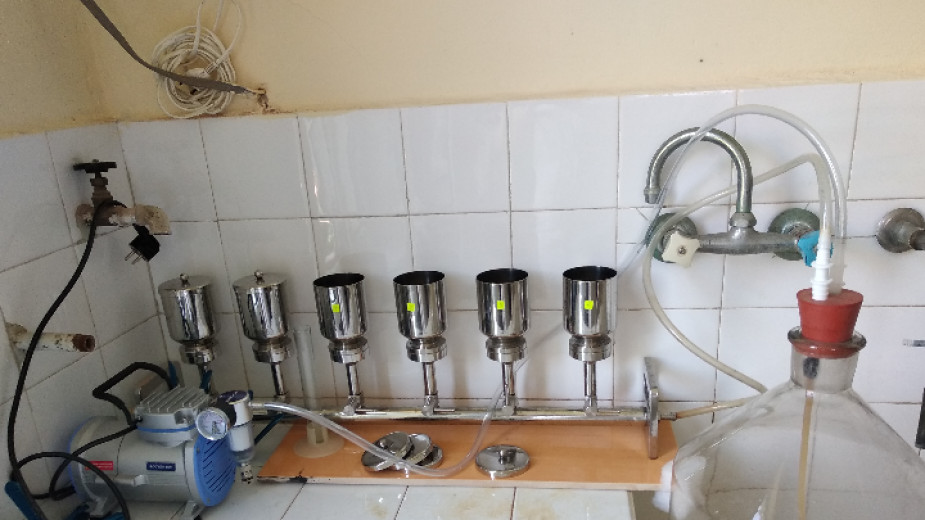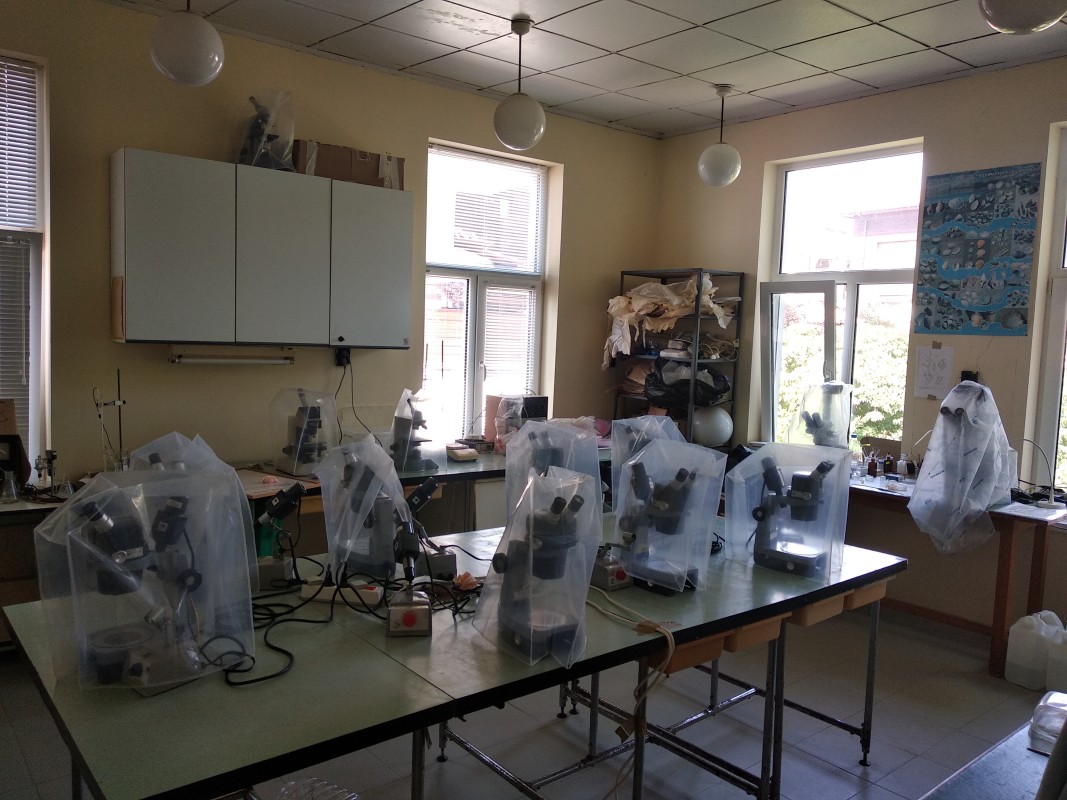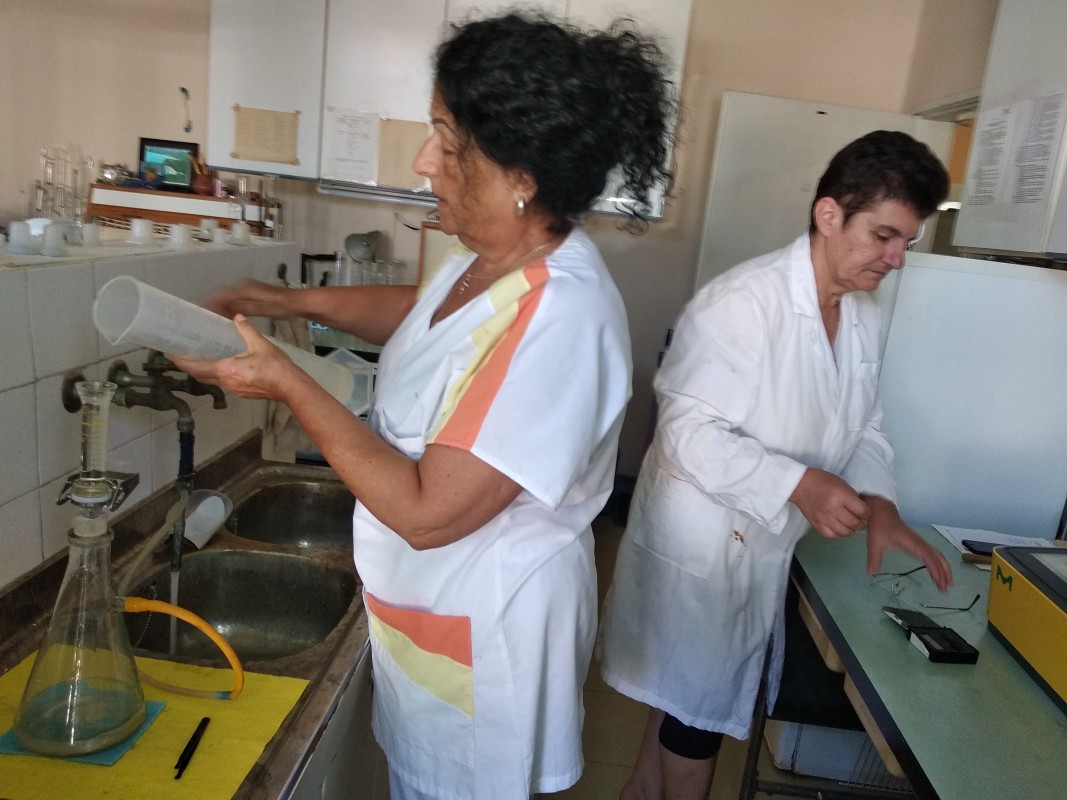
We present to your attention the first part of the journalistic research entitled "Restoring Coastal Ecosystems - Mission Possible". The research has been carried out by BNR journalist Assia Chaneva.
Assia Chaneva's journalistic research "Restoring coastal ecosystems - a mission possible" won the "Write for Climate” contest of the Bulgarian Biodiversity Foundation under the Climate Game On project of the DEAR program of the European Commission.
The research "Restoring Coastal Ecosystems - Mission Possible" shows:
• to what extent the restoration of coastal ecosystems in Bulgaria can ensure adaptation to low carbon emissions and reduce climate risks while providing benefits for biodiversity;
• how anthropogenic pressure on coastal areas is assessed;
• is there a systematic approach to restoring the Black Sea coast;
• current projects on preservation and restoration of marine and coastal ecosystems, on which experts from the Bulgarian Biodiversity Foundation and scientists from the Institute of Biodiversity and Ecosystem Research are working;
• to what extent and which coastal ecosystems of the Black Sea act as a natural shield against storms, reducing their power while stabilizing the coastline and reducing the risk of soil erosion, and at the same time offering a safe haven for different ecosystems;
• what is the scientific evidence that climate change is affecting the biodiversity of coastal ecosystems.
In the first part of the project, we visit the marine ecology laboratory of the Institute of Biodiversity and Ecosystem Research (IBER).
The laboratory is located in the town of Sozopol, on the very coast of the Black Sea. It is equipped with modern equipment and has laboratory conditions for conducting studies on biodiversity and the functioning of coastal marine ecosystems, including with a motor boat and diving equipment.
The scientific researches carried out in the Laboratory of Marine Ecology of IBEI are:
• functional monitoring of coastal marine areas;
• assessment of the anthropogenic pressure on the coastal marine area;
• development of methods for science-based management of coastal marine ecosystems and their resources.
Ch. Assistant Professor Dimitar Berov from the Functional Ecology and Bioresources of Marine and Coastal Ecosystems section in the Aquatic Ecosystems Department of IBER explains more:

• First, let's clarify what are marine wetlands and what are coastal marine ecosystems.
"Marine wetlands are coastal freshwater or brackish lakes, bodies of water with a salinity of 1 to 30% (lower than that of the ocean), and lagoons, such as the Burgas lakes. That is, lakes with freshwater or connected to the sea and there is an exchange of fresh and salt water. They are currently not the main subject of our work, we prioritize researching coastal marine ecosystems - these are the marine ecosystems in the coast, the limit up to 20 meters depth is conditionally accepted - all territorial waters of the Black Sea in Bulgaria - in the two-mile zone. This boundary is very conditional, since in the sea there is no clear demarcation of water masses, they move constantly and freely."
• Why is it important to study anthropogenic pressures on coastal marine areas?
"Coastal zones are the boundary between land and sea and as such they are the parts of marine ecosystems that are most directly affected by everything that happens on land. Human activities (industry, agriculture, the urban environment and all the pollutants that come from it) first affect this coastal area the most. Due to the fact that the Black Sea water is shallow in the coast, pollution from various sources accumulates easily and remains for a longer time in the coast. On the other hand, because of the fact that there are diverse living conditions in the coastal zone - in the bottom and in the water column, a large part of the biodiversity of different ecosystems - plant and animal species - is concentrated in the coast.
Not only in the Black Sea, but also in the World Ocean, the most biodiverse areas are in the coastline.
Therefore, all impacts resulting from human activity affect very directly precisely those places where there is the richest biodiversity. These impacts are dynamic and require constant monitoring to track what is happening to these ecosystems.
We may, of course, not monitor our coast, and then we shall find, after a long period of time, that there is some change, but we shall not know why it has happened, and what has caused it
Specifically, for the Black Sea, I give an example of something that was the subject of the Laboratory's work when it began to operate permanently in the early 1980s. At that time, the main environmental problem along the Black Sea coast was pollution with biogenic - nitrogenous and phosphorous substances of various origins - from agriculture, from industry, from untreated wastewater.
This has caused a process called eutrophication - high productivity of sea waters, which leads to increased turbidity of waters, enhanced bloom of plankton, and at a later stage leads to accumulation of organic matter that rots on the seabed, oxygen is depleted, lack of light in depth as this leads to the death of species. All this was happening in the 1980s and led to the extinction of species.
Then there were drastic changes in the Black Sea, which were observed within 5-10 years, and if it were not for the work of our colleagues from the Laboratory at that time, we would not know what was happening here in the coast.
As a result of such research, the need arose to solve these problems - to limit the use of nitrogen and phosphorus fertilizers, to limit their discharge into rivers and from there - their entry into the sea, and subsequently, to build treatment plants.
Solving these pollution problems has led to environmental legislation. After Bulgaria became part of the EU, the construction of treatment plants started in places in Bulgaria where there were none before. In the Burgas region, water treatment plants were built after 2007 and since then the water quality has improved. The treatment plant in Sozopol has been in operation since 2015.
Of course, treatment plants have also been built throughout Europe in recent years."

Assoc. Prof. Dimitar Berov explains more about the work of the Laboratory and about the sea grasses found in the Burgas coastline:
"The focus of our work is, first, to establish where and what species are found, what their ecological status is, and how it changes over different periods of time. In the last 15 years, surveys of seagrasses and algae have been carried out in the coastal zone, there we work with small vessels, go down to 2 meters deep, we also work remotely, photographing the seabed, also as divers. The diving work gives us direct access to samples of ecosystems on the bottom.
In the Black Sea, there are few areas of seagrasses, their distribution is greatest in the northwestern shelf of Ukraine and the Crimean coast - there are about 1000 km², and on our coast there are 10-20 km².
In Bulgaria, in the Black Sea, we have enough preserved seagrass fields in the coastal area. This allows for a situation when environmental conditions improve somewhere, seagrass seeds from one location to be transported to other areas where they can begin the natural recovery of that ecosystem.
We have research over the past 10 years that compares the distribution of seagrass species to our large-scale survey from the late 1970s.
It shows that there are no places along the Bulgarian coast where there were sea grasses 45 years ago and now there are not.
Seagrass beds are very dynamic – they can double in size within a few years, then lose some of the area they once occupied, disappear and then reappear.
There is virtually no need to restore coastal seagrass.
What is needed is to preserve the places where they are in good ecological condition, distributed in their natural state, to ensure that in the future, if we have a loss of biodiversity in other parts of the coast, naturally the transport of seeds and plants, those areas where we've lost those ecosystems, they're going to recover again.
In the Gulf of Sozopol we have very well-preserved fields of zoster sea grasses - a type of sea grass that is found en masse in the Black Sea.
To ensure the survival of seagrasses, we need to create areas where we can protect these ecosystems from direct destruction by construction and other human activities in the coastal zone."
• What is the scientifically proven role of sea grasses in shaping the climate?
”There are global ecological studies that show that seagrasses are responsible for 20% of the carbon productivity of the biosphere, including all forests and all grass ecosystems, with the main productivity coming from the oceans and from phytoplankton.
On a global scale, I am not talking about the Bulgarian Black Sea coast alone, there is a long-term process of loss of grass areas, this happens for various reasons in other seas, for example in the North Sea and in the Baltic Sea we have losses of large areas of sea grass.
Protecting these ecosystems is important because they absorb carbon dioxide.
Carbon dioxide captured by plants must be stored somewhere long-term to have any effect on the climate. The cycle of a plant in the water is 1 year, that is, a leaf that captures carbon dioxide in the water, a year later it is on the beach where it rots and releases carbon dioxide back into the atmosphere.
The important warehouse of carbon dioxide in the seas is the sediments that lie beneath the sea grasses. The organic matter in seagrasses is buried under layers of sediment on the sea floor and once there, due to the lack of oxygen, remains in the depths for centuries or thousands of years.
In this way, we capture long-term carbon dioxide from the atmosphere and contribute to the global carbon cycle and the stabilization of the amount of carbon dioxide in the atmosphere. Of course, if we do not mechanically destroy the sands on the seabed.”

Yana Vrabcheva and Petya Chapevova are chemists in the marine ecology laboratory of the Biodiversity Institute. They explain the nature of their work, how the sea is sampled to monitor water for biogenic elements, which elements are tested, what happens to the results, how salty the Black Sea is, how rain affects seawater and how the purity changes from its waters, after the water treatment plant came into operation in 2015, which works year-round and biologically treats wastewater from the entire town of Sozopol, Chernomorets and the village of Ravadinovo.
The laboratory monitors seawater at well-defined points in the sea, and has shown that since 2015, after the commissioning of the treatment plant, the purity of the sea has been within standards. Every Monday, about 5 liters of seawater are sampled, the chlorophyll content of the water is measured, and the presence of biogenic elements: phosphate, nitrate, nitrite, ammonium, nitrogen is also measured.
The salinity of the seawater and its temperature are also measured. On today's August day, the temperature of the sea water is 26.4 C and its salinity is 17.8 ppm.
The usual salinity of the Black Sea is from 16 to 18 ppm. The fluctuations in the salinity of the water are due to rain and snow.
In addition to being an author and a host of the evening line ALARMA of BNR’s Hristo Botev national channel, which in 2023 celebrates its 15th anniversary, Assia Chaneva is the author and presenter of the feature on ecology and climate "Green Minutes" within the broadcast for science "Labyrinths of Knowledge". Green minutes has been on the air since January 7, 2021 every Thursday at 4 p.m. on the Hristo Botev channel of the BNR.
Assia Chaneva is a member of the second cohort of journalists of OCJN - the Oxford Climate Journalism Network. OCJN is a program of the Reuters Institute.
Photos: Assia Chaneva
Radio Bulgaria, as a program of the BNR published in 11 languages, has an audience spread over six continents. Part of it has a special attitude towards our country and wants to learn more about its history, culture, traditions and..
The international initiative No Elevators Day will be celebrated today with a climb to the fourteenth floor of the College of Tourism in Burgas. Anyone who wants to join in can test their physical strength by participating individually or in a team..
Collectors from Bulgaria and abroad, as well as authors of natural paintings and mineral products, meet at the Spring Exhibition of Minerals, Fossils and Gems at the Earth and Man National Museum. The organizers announce that a temporary exhibition..
A little over 1,450 Leva is the sum needed per month by an individual living in a one-person household, and a total of 2,616 Leva for the monthly..
The traditional "Easter Workshop" will be held from April 23 to 26 in the Ethnographic Exposition of the Regional History Museum - Pazardzhik...
Every child dreams of having all the time in the world in which to play and enjoy piles of sweet delights. One of the most favorite, of course, is His..

+359 2 9336 661
